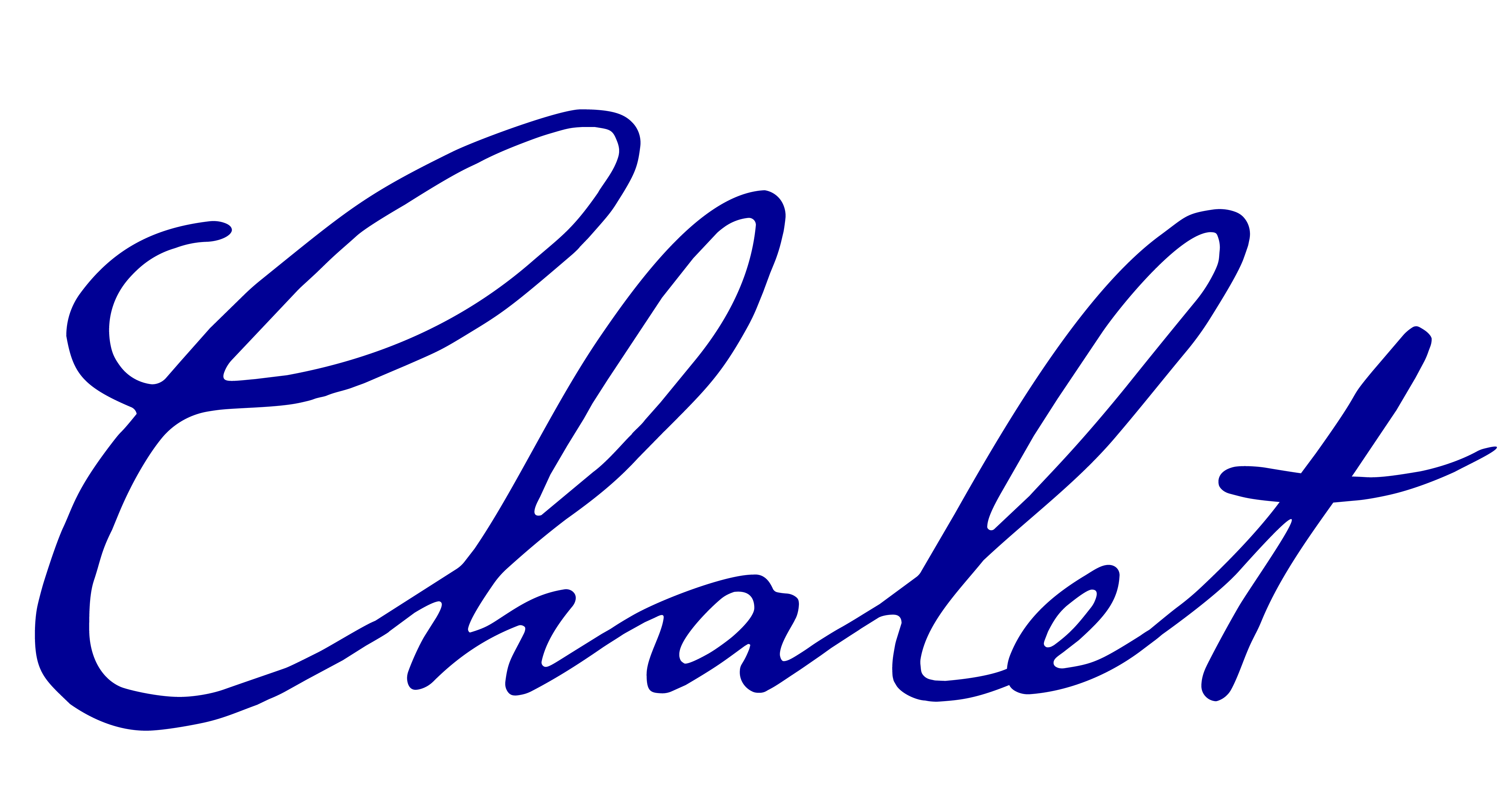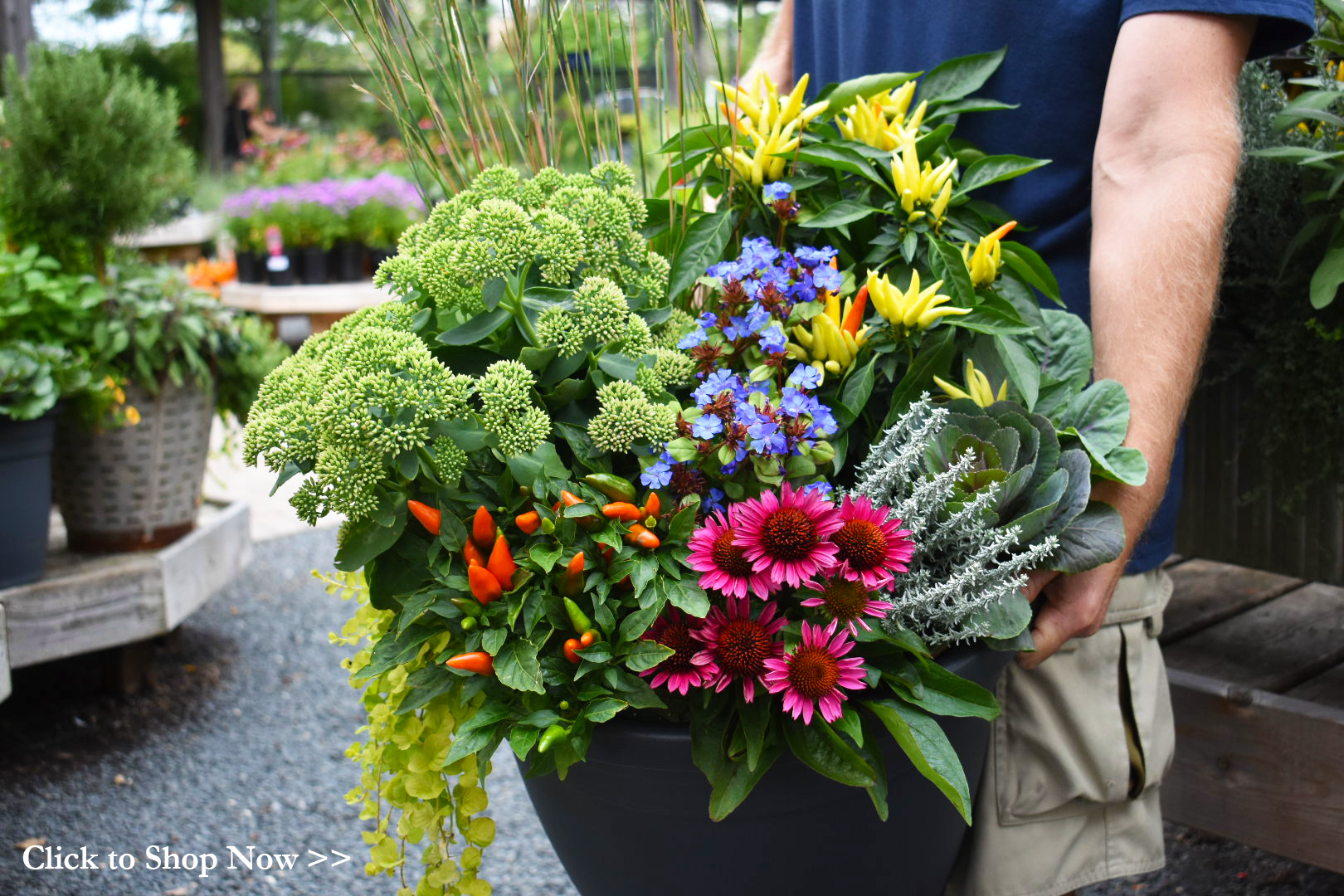
Tips & Trends for Fresh Fall Containers
Extremes in summer weather have taken a toll on gardens… and planters, too. I dare anyone to say their formerly beautiful containers look exactly the way they’d like as fall becomes fact.
Since we still have lots of time before winter, why not enjoy that time with feast-for-the-eyes gorgeous pots? I asked Earl Lieske, III, Chalet’s Wilmette planter guru, what trends he’s creating for fresh fall container gardening fashions.
Tony: What do you see as a trend that consistently gets overlooked, but deserves recognition?
Earl: Especially if you have large containers, I love the idea of using shrubs or evergreens as a focal point or base. You can achieve size, texture and colors that can be hard to get with annuals, especially the fall “standards”. A shrub not only provides a backdrop for smaller, finer-textured plants, but will also help balance the visual weight of the pot, especially if the pot is a dark color. Evergreens, in particular, can be retained for the next seasonal change-out of that pot.

Shrub Pot
Includes: Golden arborvitae, ornamental pepper, Calibrachoa, Creeping Jenny and Lantana
T: You’re right. I’m guilty of that, too. I always think very strictly about seasonal annuals for my own containers.
E: Taking that another step further, I love using perennials in containers, spring, summer, fall. The addition of perennials can add an unexpected “wow” factor. When you look at shade containers for late summer/early fall, think of what a Hosta or a variegated Japanese Forest Grass could add. And it’s a double value as you can pull it before the ground freezes, plant it in your perennial border and mulch for years of perennial enjoyment. It’s almost a double-your-money investment.
Perennial Pot (mostly)
Includes: Sedum ‘Autumn Joy’, Echinacea, ornamental pepper, cabbage and kale, plumbago, curry, Lysimachia
T: That’s such a great idea, Earl. What other trends are you incorporating into your fall creations?
E: Everyone’s consciousness is rightly focused on what we eat, how clean it is and what control we have over what we’re putting in our bodies. For fall, many edibles are tropical and pass on with a killing frost. I like to include Swiss Chard for the texture and stem color it brings to the party. And I love the fall longevity of doing a pot that’s predominantly herbs. As temperatures drop, move it closer to the back door for weather protection and an easy trip out the door for a snip of herbs to add to a family meal.

Herb Pot
Includes: English lavender, rosemary, curry, silver-edge, lemon and woolly thyme, variegated marjoram, Greek oregano, sages
T: Great point. What exactly do you tell guests that have never used the ornamental cabbage, kale and peppers before and hope to eat them at some point?
E: That certainly bears mentioning. The ornamental cabbage and kale look terrific until temps consistently stay below 28 degrees for long periods of time, then it’s time for them to go. They have been bred for looks, color and texture, but flavor has been sacrificed. They’re really bitter.
T: One last question, if you need a break from mums and asters what would you recommend?
E: There’s a whole array of frost-tolerant annuals that can be combined to create containers with interesting colors and textures. Think of the first spring blooming plants you see at Chalet. Pansies, Calibrachoa, snapdragons are among those making a return in the fall. Mix ‘em up, use them with other fall plants for a totally different look.
Annual Pot
Includes: Lemon cypress, ornamental cabbage and pepper, Swiss chard, snapdragon, Calibrachoa, Celosia and plumbago
T: Thank you Earl for sharing some great tips and tricks for fall containers!
Did you know you can shop some of Earl's team's Signature Planters online? Click here!


